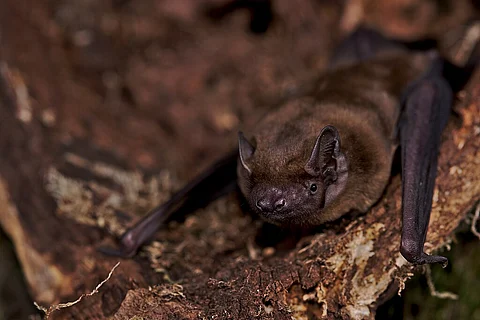

The common noctule bat (Nyctalus noctula), a widespread European bat species, will expand its hibernation range towards the northeast of the continent as temperatures rise, according to a new study published in Ecology Letters on May 4, 2025.
The study added that as temperatures rise over time, there will be an expansion of regions in the south of Europe where the hibernation season will disappear. In such locations, temperatures will become high enough for individuals to regularly forage and thus possibly avoid hibernation.
By integrating physiological data with robust climate models, the study revealed how shifts in temperature regimes are reshaping the very geography of bat hibernation, shedding light on broader ecological consequences of a warming planet.
Hibernation areas are expected to shift and expand further north- and eastwards, found the study led by Kseniia Kravchenko.
Under climate change forecasts SSP1-2.6, SSP2-4.5, SSP3-7.0, and SSP5-8.5, for which winters will shorten by 1.4-41 days and warm by 0.11°C-2.3°C, the hibernation area is predicted to shift by 78-732 km and expand north-eastward by 5.8 per cent-14 per cent by 2100.
“The current spread towards the northeast is predicted to continue by about 80 kilometres averaged across models, increasing the potential hibernation area by 5.8 to 14.2 per cent between 2019 and 2099, depending on the climate change scenario,” the study said.
Under the most severe climate change scenario, where emissions are expected to increase, winter temperatures will rise by 2.35°C and average hibernation seasons will shorten by 41 days. This northward shift is predicted to extend to about 730 km, yielding a predicted total northward shift of about 990 km over two centuries.
Common noctules are capable of range shifts of several hundred kilometres in only a few decades, previous studies have showed. Thus, it is possible that as temperatures keep rising, the species will keep tracking changes in the potential hibernation area by continuously expanding its hibernation range toward the northeast of Europe.
Yet, this could lead to challenges when other requirements for hibernation — such as appropriate hibernation sites and food availability before the start of the winter — are not available in the new areas where temperature becomes suitable.
Hibernation serves multiple roles beyond energy conservation, including mitigating the risks of predation and resource (water or roost) scarcity during winter. The inability to express prolonged torpor (a state of physical or mental inactivity) could have cascading effects on survival, reproduction, and population dynamics, researchers cautioned.
The study was carried out at the Leibniz Institute for Zoo and Wildlife Research (Leibniz-IZW), Germany.